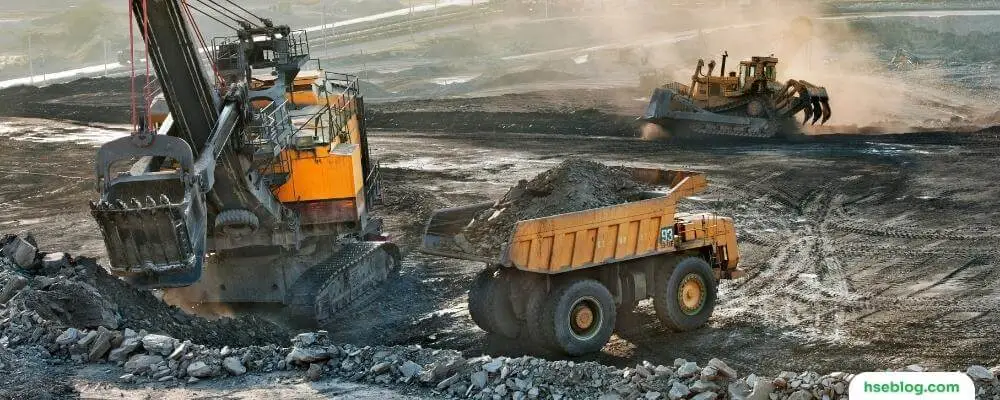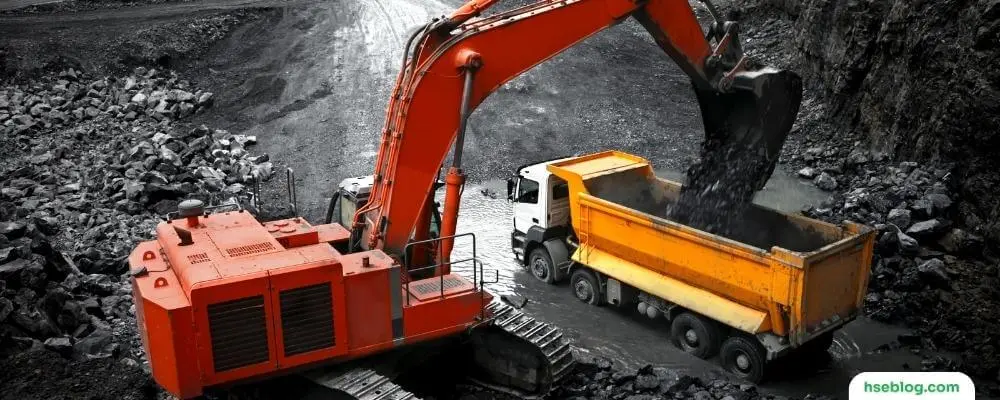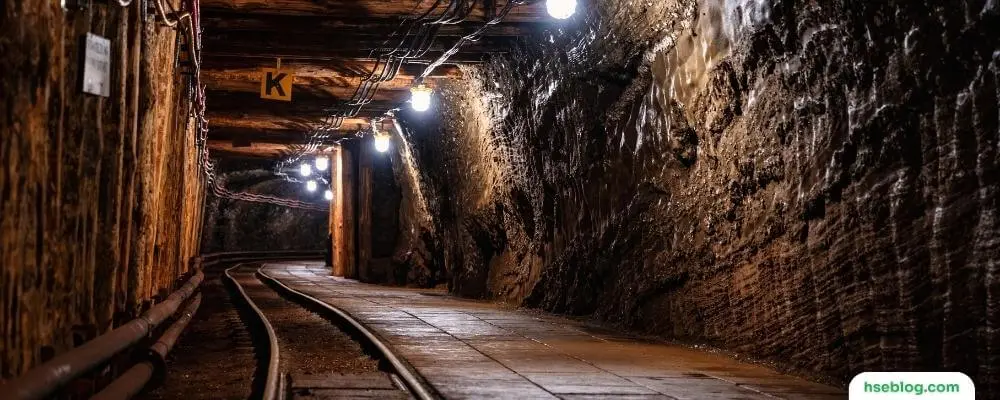Safety is paramount in the mining industry, where workers face many potential hazards every day. From heavy machinery to environmental risks, mining operations require a steadfast commitment to implementing effective safety measures to protect workers’ well-being. By prioritizing safety and adhering to proper protocols, mining companies can significantly reduce the occurrence of accidents and create a secure working environment for their personnel.
In this blog, we will discuss seven essential safety tips that can help minimize the risks associated with mining operations. These tips are designed to raise awareness, promote best practices, and empower workers and management to mitigate potential hazards. Whether you are a mining professional, a supervisor, or an employer in the mining industry, these safety tips serve as a valuable resource to enhance safety measures and ensure the well-being of all individuals involved in mining operations.
By implementing these safety tips and fostering a culture of safety consciousness, we can work together to minimize the occurrence of mining accidents and protect the lives and health of those working in this challenging industry. Let’s explore these crucial safety guidelines that can significantly reduce mining accidents and foster a safer working environment for everyone involved.
7 Safety Tips to Reduce Mining Accidents
Working in mining is a risky business. Earlier this year, a man was killed in an accident at a copper mine in Australia. Another accident at a coal mine in southwest China claimed 22 lives. In fact, China has some of the most dangerous mines in the world, and authorities have scrambled to enforce safety rules. If you’re considering a career in mining, it is crucial that you take the following safety measures to keep your time in the mines as trouble-free as possible.
1. Acknowledge and Respect the Risks Involved
The initial and most crucial step in ensuring safety while working in the mining industry is clearly understanding and accepting the inherent risks. By its very nature, mining is fraught with potential dangers, ranging from machinery-related incidents to environmental hazards like rockfalls or gas leaks.
Being in a state of continuous alertness is not just a requirement but a necessity when working in such environments. It’s vital to remember that safety in a mining setting isn’t solely about personal safety; it’s also about the safety of your fellow workers. A vigilant eye and prompt action can often be the difference between a minor mishap and a serious accident.
Complacency in a mining environment can have severe consequences. Even a brief moment of inattention can trigger accidents with significant ramifications. Therefore, never allow a lapse in concentration or a relaxed attitude towards safety measures. This doesn’t mean living in constant fear but rather having an unwavering commitment to safety practices, ensuring you and your colleagues remain secure and protected from potential accidents at all times.

2. Prioritize Safety in Task Planning and Promote Open Communication
Planning tasks in a mining environment involves much more than simply optimizing for efficiency and productivity. Every task has unique safety considerations that should be adequately addressed during planning. Never let operational pressures or tight deadlines undermine the importance of safety. This might necessitate allocating extra time, effort, and resources to ensure safety measures are considered and implemented effectively.
Conduct thorough risk assessments for all tasks, focusing on the potential for accidents and how these risks can be reduced or eliminated. This proactive approach toward risk management can significantly mitigate the chances of unexpected incidents.
Where complete risk elimination isn’t feasible, the focus should shift toward risk control and mitigation. Ensure your team is thoroughly briefed about the possible dangers and trained in the appropriate safety procedures to manage those risks. Clear, unambiguous communication ensures everyone understands their roles and responsibilities in promoting safety.
Moreover, in the event of a risk manifesting, it’s vital to have established procedures for dealing with the situation. This should involve immediate reporting, evacuation plans, first aid measures, and possibly crisis management training. By arming your team with the right knowledge and tools, they’ll be better equipped to prevent an incident or react swiftly and efficiently if one does occur.
3. Invest in Regular and Comprehensive Safety Training
Ensuring that all team members undergo consistent and thorough safety training is crucial to maintaining a safe working environment in the mining industry. This principle should apply not only to new recruits but also to seasoned employees. Everyone on the team, irrespective of their experience level, can benefit from periodic refresher courses that remind them of the best practices and latest safety standards.
Effective safety training programs typically incorporate both theoretical learning and hands-on practical exercises. This blended approach helps participants understand and apply the rules and guidelines in simulated real-world scenarios.
Conducting regular health and fitness evaluations for physically demanding roles is advisable. These assessments can determine whether workers can handle the physical requirements of their roles without jeopardizing their health or safety. Regular medical examinations can also help detect and manage potential health issues before they become a serious concern. Remember, a well-trained and health-conscious workforce is key to a safer and more productive mining operation.
4. Prioritize the Use of Personal Protective Equipment (PPE)
The use of proper Personal Protective Equipment (PPE) is vital in ensuring the safety of mining workers. Helmets, safety glasses, gloves, and other equipment protect against potential hazards. It is crucial for all workers to wear the appropriate PPE consistently and correctly, as it acts as a barrier against injuries and reduces the risk of accidents. Helmets, for example, have proven to be life-saving in many instances. By emphasizing the importance of PPE usage through training and regular reminders, employers can create a culture of safety where workers prioritize their own well-being.
Maintain and Inspect Safety Equipment Regularly
To ensure the effectiveness of PPE, it is essential to regularly maintain and inspect the equipment. Employers should provide necessary resources for the availability and proper upkeep of safety gear. This includes conducting inspections, replacing worn-out equipment, and promptly addressing defects or damages. By establishing a robust equipment maintenance and inspection system, mining companies can ensure that workers have access to functional and reliable protective gear, reducing the risk of accidents and injuries in the workplace.

5. Implement Effective Supervision and Enforcement of Safety Rules
A crucial aspect of ensuring safety in mining operations is effective supervision and enforcement of safety rules. All team members must adhere to safety instructions without exceptions, and supervisors must diligently follow up and enforce these rules.
Supervisors should closely monitor the work site and ensure no unauthorized personnel enters restricted areas. It is important to maintain a strict headcount and be aware of the whereabouts of all team members throughout each shift. This knowledge allows supervisors to respond swiftly in case of emergencies or incidents.
Promoting a culture of mutual awareness and accountability among team members is essential. Workers should be informed about the activities and responsibilities of their fellow team members throughout the day. This information exchange enhances situational awareness and enables prompt action for potential hazards or risks.
Supervisors must be proactive in addressing any violations of safety rules. Any breaches should be met with appropriate warnings or consequences, especially in the case of repeated disobedience. This reinforces the importance of safety and ensures that all team members understand the gravity of non-compliance. By emphasizing supervision, enforcement, and accountability, mining companies can establish a culture of safety where all team members actively contribute to maintaining a secure working environment.
6. Document and Communicate Clear Safety Procedures
To ensure a swift and effective response to accidents or incidents, it is crucial to document safety procedures in a clear and comprehensive manner. These procedures should outline step-by-step instructions on handling various incidents in the mining environment.
When documenting safety procedures, it is important to consider different scenarios and provide detailed guidance on what actions must be taken and who should be contacted in each situation. This includes medical emergency protocols, equipment malfunctions, hazardous material spills, or natural disasters. By addressing a wide range of potential incidents, the procedures can serve as a valuable reference for all team members.
To ensure that the safety procedures are readily available and accessible, display them prominently throughout the work site. This includes areas where team members gather, such as break rooms, common areas, or near entrances and exits. Clear signage and visible reminders can help reinforce the importance of following safety protocols and provide quick access to crucial information when needed.
Regular training sessions and refresher courses should also incorporate the safety procedures, ensuring all team members are familiar with the documented guidelines. By documenting and communicating clear safety procedures, mining companies can empower their employees to respond effectively in emergencies, minimizing risks and promoting a culture of safety awareness.

7. Adhere to Up-to-Date Safety Standards
Adhering to the latest safety standards is essential in promoting a safe working environment in the mining industry. Regularly service and maintain all safety equipment to meet the current safety requirements. It is crucial not to compromise on safety by trying to save costs or extend the lifespan of outdated equipment. If any safety equipment no longer complies with the latest standards, it should be promptly replaced, even if this means incurring additional expenses or delaying a project. Under no circumstances should staff members be allowed to use outdated or non-compliant safety equipment, even for a short period of time.
The mining industry has unfortunately witnessed numerous incidents that could have been prevented. Learning from past mistakes and prioritizing safety to minimize accidents is vital. While it is impossible to completely eliminate all risks, following the safety tips outlined above can significantly reduce the likelihood of incidents and create a safer working environment for all mining personnel. By staying vigilant, adhering to safety protocols, and staying up-to-date with the latest safety standards, mining companies can help protect their workers and prevent avoidable tragedies.
Conclusion
Prioritizing safety in the mining industry is of utmost importance, as it directly impacts the well-being and lives of workers. By following the seven safety tips discussed in this blog, including acknowledging risks, proper planning, and communication, training, wearing safety equipment, effective supervision, documenting procedures, and adhering to up-to-date safety standards, mining companies can significantly reduce the occurrence of accidents and create a safer working environment.
By consistently implementing these safety measures, we can protect the precious lives of mining personnel and ensure they can carry out their duties confidently and safely. Together, let’s strive for a safer future in the mining industry.

